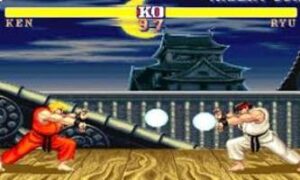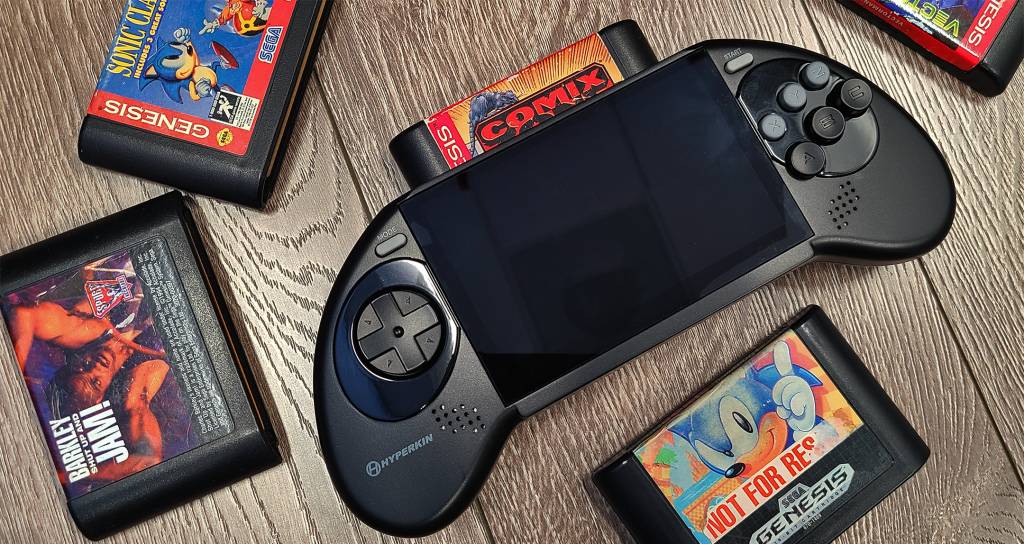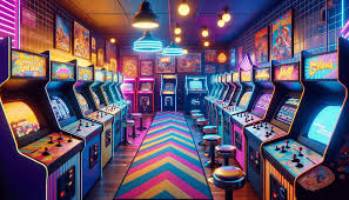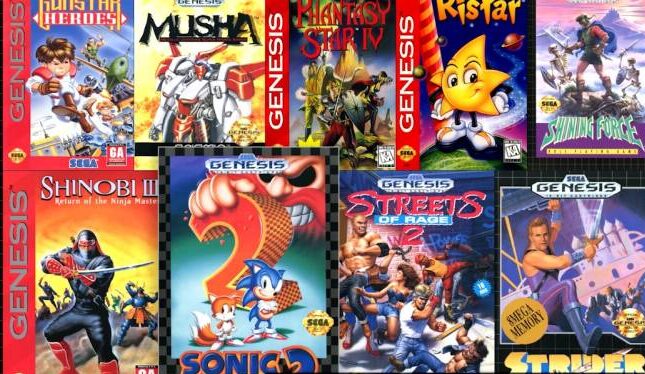The origin of Sega
The Origin of Sega starts with Service Games, a company founded in 1951 by Raymond Lemaire and Richard Stewart. Initially, Service Games developed and marketed amusement-type games and machines. The company moved to Japan in 1952 and was renamed Service Games of Japan.
Formation of Service Games
In 1951, Raymond Lemaire and Richard Stewart started Service Games. Their goal was to develop and market amusement-type games and machines. Within a few years, the company began importing jukeboxes and slot machines to supply American military bases in Japan.
When did Sega move to Japan?
While initially providing games for military bases under Standard Games, the company moved to Japan in 1952. Following this move, it was renamed Service Games of Japan.
Establishment of Rosen Enterprises
In 1954, American entrepreneur David Rosen founded Rosen Enterprises. This company dealt with various products, including instant photo booths and mechanical arcade games. Rosen Enterprises was merged with Nihon Goraku Bussanin 1965 to form Sega Enterprises, Ltd.
Introduction of the Sega Brand
Sega, an abbreviation of Service Games, was first used in 1954 on a slot machine called the Diamond Star. During this period, David Rosen, an American officer stationed in Japan, launched a photo booth business in Tokyo.
Expansion into Arcade Games
In 1957, Rosen began importing mechanical coin-operated arcade games. These games were popular on U.S. military bases in Japan but were unfamiliar to the Japanese public.
Growth and Transformation
Sega 1000 jukebox
Due to investigations by the U.S. government into criminal business practices, Service Games of Japan was dissolved on May 31, 1960. Despite this, the company continued using the “Sega” brand. The first original product under this name was the Sega 1000 jukebox in 1960.
Formation of Sega Enterprises
In 1965, Rosen was dissatisfied with the mechanical games he was importing. He orchestrated a merger with Service Games, which had its factory by then. Nihon Goraku Bussan acquired Rosen Enterprises to form Sega Enterprises, Ltd.
Development of Original Arcade Games
Originally an importer of coin-operated arcade games and manufacturer of slot machines and jukeboxes, Sega began developing its arcade games in 1966. The game Periscope was a surprise success, leading to more arcade machine development.
Acquisition by Gulf & Western Industries
In 1969, Rosen sold his company to the U.S.-based Gulf & Western Industries (G&W), becoming a millionaire in the deal while remaining with Sega as chief executive. However, rampant piracy led Sega to cease exporting its games around 1970.
Public Offering and Video Games
Two years after Atari launched Pong in 1972, G&W made Sega Enterprises a subsidiary and took it public. In 1973, Sega released its first video-based game, Pong-Tron.
Becoming an American Company
In 1974, Sega became an American company after making its first public stock offering. Sega Enterprises, Inc. became the head office, with Sega Enterprises Ltd. as a Japanese subsidiary. The company opened a factory on the west coast the following year.
Introduction of Notable Games
In 1979, Sega released Head On, which introduced the “eat-the-dots” gameplay later popularized by Namco’s Pac-Man. In 1981, Sega licensed Frogger, which is its most successful game.
Innovation in Graphics
In 1982, Sega introduced Zaxxon, the first game with isometric graphics.
Buyout and Partnership with CSK Corporation
In 1984, Nakayama and Rosen arranged a management buyout of the Japanese subsidiary. They received financial backing from CSK Corporation, a prominent Japanese software company. This move marked a new chapter in Sega’s history, setting the stage for future innovations and successes in the gaming industry.
Sega vs Nintendo
The rivalry between Sega and Nintendo is one of the most famous in video game history. It peaked during the late 1980s and early 1990s. Sega’s Genesis competed directly with Nintendo’s NES and SNES. Sega’s aggressive marketing campaign, including the slogan “Sega does what Nintendon’t,” was a significant aspect of this rivalry. While Sega had notable successes with the Genesis, Nintendo eventually emerged as the dominant player. The rivalry cooled as Sega exited the console market after the Dreamcast, shifting its focus to game development.
Sega Genesis
The Sega Genesis, also known as the Mega Drive outside North America, is a 16-bit home video game console released by Sega in 1988 in Japan and 1989 in North America. It was Sega’s most successful console, known for its extensive library of games, including the iconic Sonic the Hedgehog series. The Genesis was a significant competitor to the Super Nintendo Entertainment System (SNES) during the fourth generation of video game consoles.
Sega Dreamcast
The Sega Dreamcast is a home video game console released by Sega It was the first sixth-generation console The Sega Dreamcast is a home video game console developed by Sega in 1998 in Japan and in 1999 in the United States. The Dreamcast was the first sixth-generation console, preceding Sony’s PlayStation 2, Nintendo’s GameCube, and Microsoft’s Xbox. It was notable for being the first console to include a built-in modem for online play. Despite its innovations, the Dreamcast was commercially unsuccessful and marked Sega’s exit from the console manufacturing market.
Some of the innovative features of the Sega Dreamcast
The Sega Dreamcast was notable for several innovative features, including:
- Built-in Modem:
The Sega Dreamcast was the first console to feature a built-in modem for online play and internet browsing.
- VMU (Visual Memory Unit):
The Dreamcast’s memory card featured a screen that could display game data and play mini-games independently.
- Graphics and Performance:
The Dreamcast boasted advanced graphics for its time, with a powerful graphics processor capable of producing high-quality 3D visuals.
- Controller Design:
The Dreamcast controller included an analog stick and a D-pad along with a Multiple-button play and slots for the VMU and other peripherals.
Popular Games of the Sega Dreamcast

The Dreamcast had a diverse library of games, some of which became classics. Popular titles included:
- Sonic Adventure
A 3D platformer featuring Sega’s iconic mascot, Sonic the Hedgehog.
- Shenmue
Shenmue is an open-world action-adventure game known for its detailed environment and immersive gameplay.
- Soulcalibur
Soulcalibur is a critically acclaimed fighting game with impressive graphics and gameplay.
- Crazy Taxi:
Crazy Taxi is an arcade-style racing game where players transport passengers to their destinations as quickly as possible.
- Jet Set Radio:
Jet Set Radio is a stylish action game that introduced cel-shaded graphics and featured inline skating and graffiti.
Why did Sega Dreamcast fail
Despite its innovations and a strong library of games, the Dreamcast faced several challenges that led to its commercial failure:
- Competition
The impending release of Sony’s PlayStation 2 overshadowed the Dreamcast. The PS2’s capabilities and the popularity of the PlayStation brand attracted many consumers.
- Marketing and Timing
It struggled with effective marketing and strategic timing. The Dreamcast’s launch was not as well-coordinated as it could have been.
- Third-Party Support
It had difficulty securing robust third-party support, leading to a less diverse game library compared to competitors.
- Financial Issues
It had faced financial difficulties due to previous failures like the Sega Saturn, which limited its ability to support the Dreamcast adequately.
Sega discontinue the Dreamcast
Sega discontinued the Dreamcast in March 2001, less than two and a half years after its initial release. The company announced that it would exit the console hardware business and focus on becoming a third-party game developer.
The Legacy of the Sega Dreamcast
Despite its commercial failure, the Dreamcast is remembered fondly by gamers and has achieved a cult following. It is praised for its forward-thinking features, innovative games, and influence on the future of gaming. The Dreamcast’s emphasis on online gaming paved the way for future consoles, and its unique titles remain celebrated in gaming history.
Sega influence in the development of video games
Sega significantly influenced the video game industry by introducing innovative gameplay mechanics, developing iconic characters like Sonic the Hedgehog, and pioneering online play with the Dreamcast. Sega’s contributions have left a lasting impact on the gaming world.

Top 10 Frequently Asked Questions (FAQ) About Sega
Q1: Who is the CEO of Sega?
A1: As of 2024, Haruki Satomi is the President and Group CEO of Sega Sammy Holdings Inc.
Q2: Which country brand is Sega?
A2: Sega is a Japanese brand that was originally founded in Japan. The headquarter of the Sega was in Tokyo.
Q3: Who owns Sega now?
A3: A Japanese holding company that was formed by the merger of Sega and Sammy Corporation owned Sega, named as Sega Sammy Holdings Inc.
Q4: When was the name “Sega” first used?
A4: The name “Sega,” was first used in 1954 on a slot machine, called the Diamond Star. It is an abbreviation of Service Games.
Q5: What was Sega’s first successful arcade game?
A5: Sega’s first successful arcade game was Periscope, released in 1966. The success of Periscope transforms Sega from an importer of arcade games to a developer.
Q6: When did Sega become an American company?
A6: Sega became an American company in 1974 after making its first public stock offering. Sega Enterprises, Inc. became the head office, with Sega Enterprises Ltd. as a Japanese subsidiary.
Q7: What are some of Sega’s most iconic games?
![]()
A7: Some of Sega’s most iconic games include
- Sonic the Hedgehog
- Head On (1979)
- Frogger (1981)
- Zaxxon (1982).
Q8: What were the Sega Genesis and the Sega Master System?
A8: The Sega Master System, released in 1986, was Sega’s response to the Nintendo Entertainment System (NES). The Sega Genesis, released in the late 1980s, was known for its aggressive marketing and iconic games like Sonic the Hedgehog.
Q9: Why did Sega stop making consoles?
A9: After the failure of the Dreamcast Sega stopped making consoles. Despite being the first sixth-generation console with online play, the Dreamcast could not compete with the PlayStation 2. Sega ceased production of the Dreamcast in 2001 and shifted to creating games for other platforms.
Q10: What is Sega’s role in the gaming industry today?
A10: Today, Sega is a third-party game developer, creating games for various platforms. Sega no longer produces consoles but it will remain a significant and beloved name in the gaming industry.


